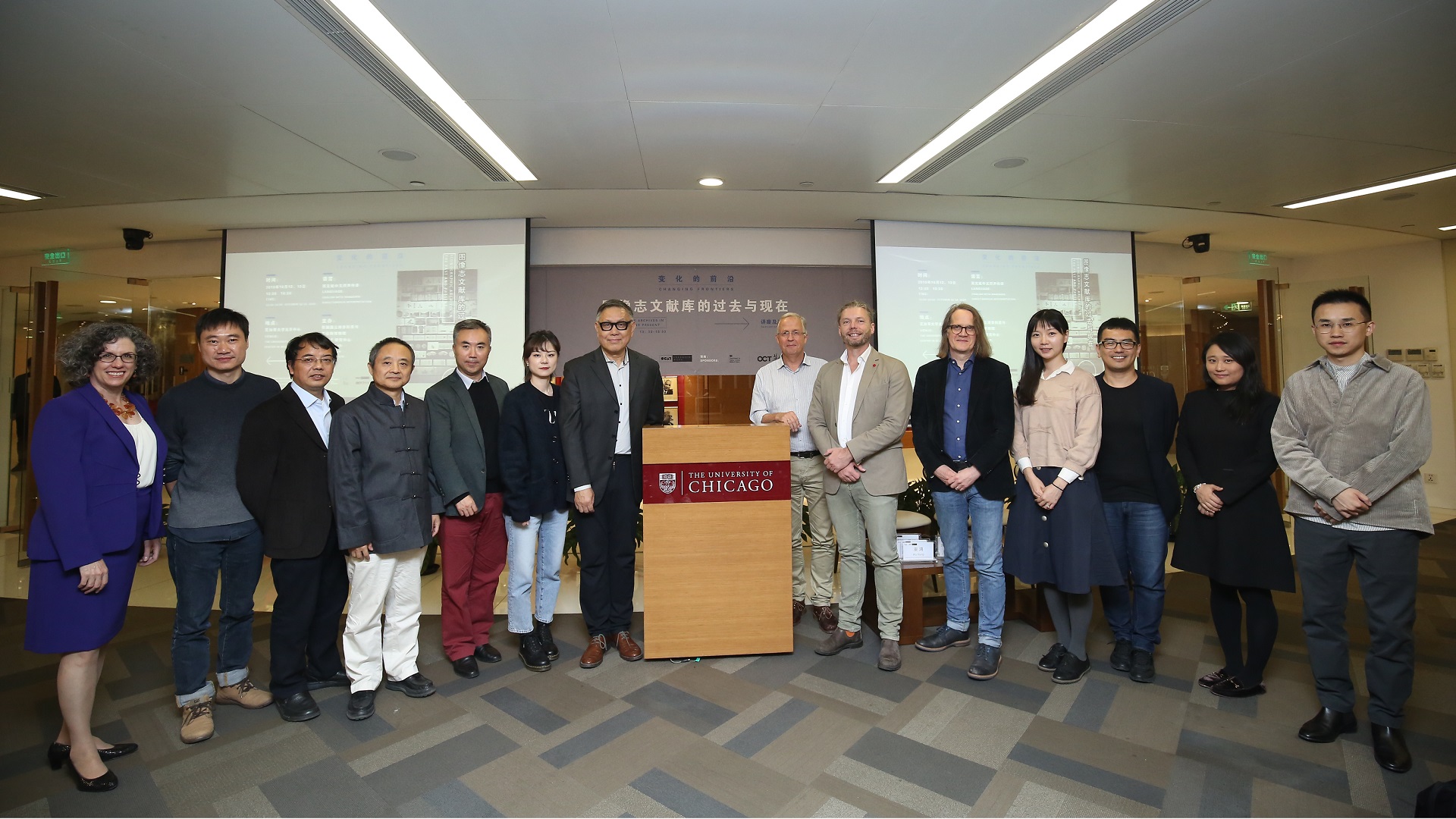

The V&A’s Chinese Iconography Thesaurus (CIT) project team and the OCAT Institute held the conference ‘Changing Frontiers: Iconographic Archives in the Past and Present’ at the University of Chicago Center in Beijing from 12 – 13 October 2019.
‘Changing Frontiers: Iconographic Archives in the Past and Present’ was the first public event in China to look deeply into the critical issues central to historical and contemporary practices in Europe and North America in building image archives for iconographic studies. Focusing on four specific examples of iconographic collections developed in Europe and North America during the last hundred years, speakers included Paul Taylor, the Curator of the Photographic Collection at the Warburg Institute; Pamela Patton, the Director of the Index of Medieval Art at Princeton University; Hans Brandhorst, the Editor of the Iconographic Classification System (Iconclass) and Arkyves in Netherlands; and Zhang Hongxing, Senior Curator of Chinese Collections at the V&A. Each speech was followed by a Q&A session hosted by a Chinese scholar.
Zhang Hongxing presented an overview of the Chinese Iconography Thesaurus, a pilot project launched by the V&A’s Asia Department in 2016, which brings together sinology, art history and information studies to create the first thesaurus of Chinese iconography. CIT aims to create a shared research platform that facilitates access of digital collections across museums, providing an essential tool for establishing a new vocabulary and resource for the documentation of Chinese art objects. The CIT image database currently features 2688 collection highlights from the V&A, The Metropolitan Museum in New York and the Palace Museum in Taipei.
The conference aimed to establish a platform for the exchange of ideas and experiences between Western academics and Chinese students, scholars and professionals from cultural heritage organisations, and to open up opportunities for future collaborations in the use and further development of iconographic archives in China, Europe and North America.
In Europe and North America, iconography has been experiencing a renewal after a period of self-criticism prevalent in the 1960s and 1970s. Whereas past iconographical research dealt primarily with religious subject matter or the representational styles from classical and medieval periods in Western art, today the field has expanded to include topics hitherto neglected, ranging from gender, ethnicity and politics, to non-Western art, abstract and non-representational styles. With the advent of the internet, this iconographic revitalisation in the academic community is compounded with the surging interest in iconography among the public. In parallel with this iconographic revival in the West, there has been a rapid growth of interest in the subject as a branch of art historical research and as a methodology for investigating visual materials in the Chinese academic world.
Senior Curator at The V&A, and CIT Chief Editor & Project Director, Zhang Hongxing said, “Arranging visual materials according to a chronological and geographical order is inadequate for recording and accessing detailed iconographic information. The V&A’s CIT project establishes a new vocabulary and resource for the documentation of Chinese art, and initiates a specialist image archive that aims to allow access to, and iconographic studies of, large collections of Chinese art objects from around the world.”
The conference was co-organised by the V&A’s CIT project team and the OCAT Institute in Beijing and funded by the Department of Digital, Culture, Media and Sports (DCMS) of the U.K. government.



